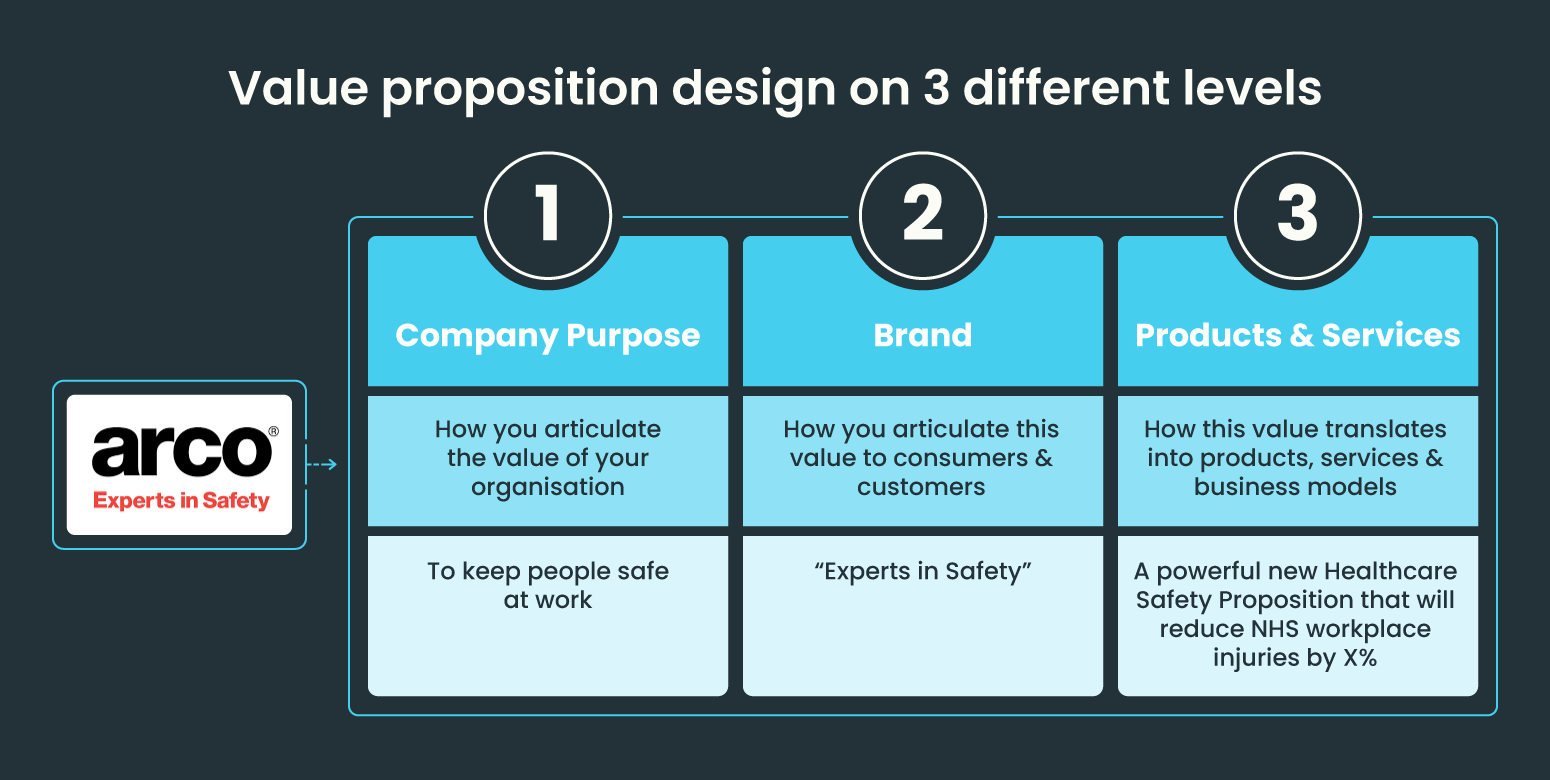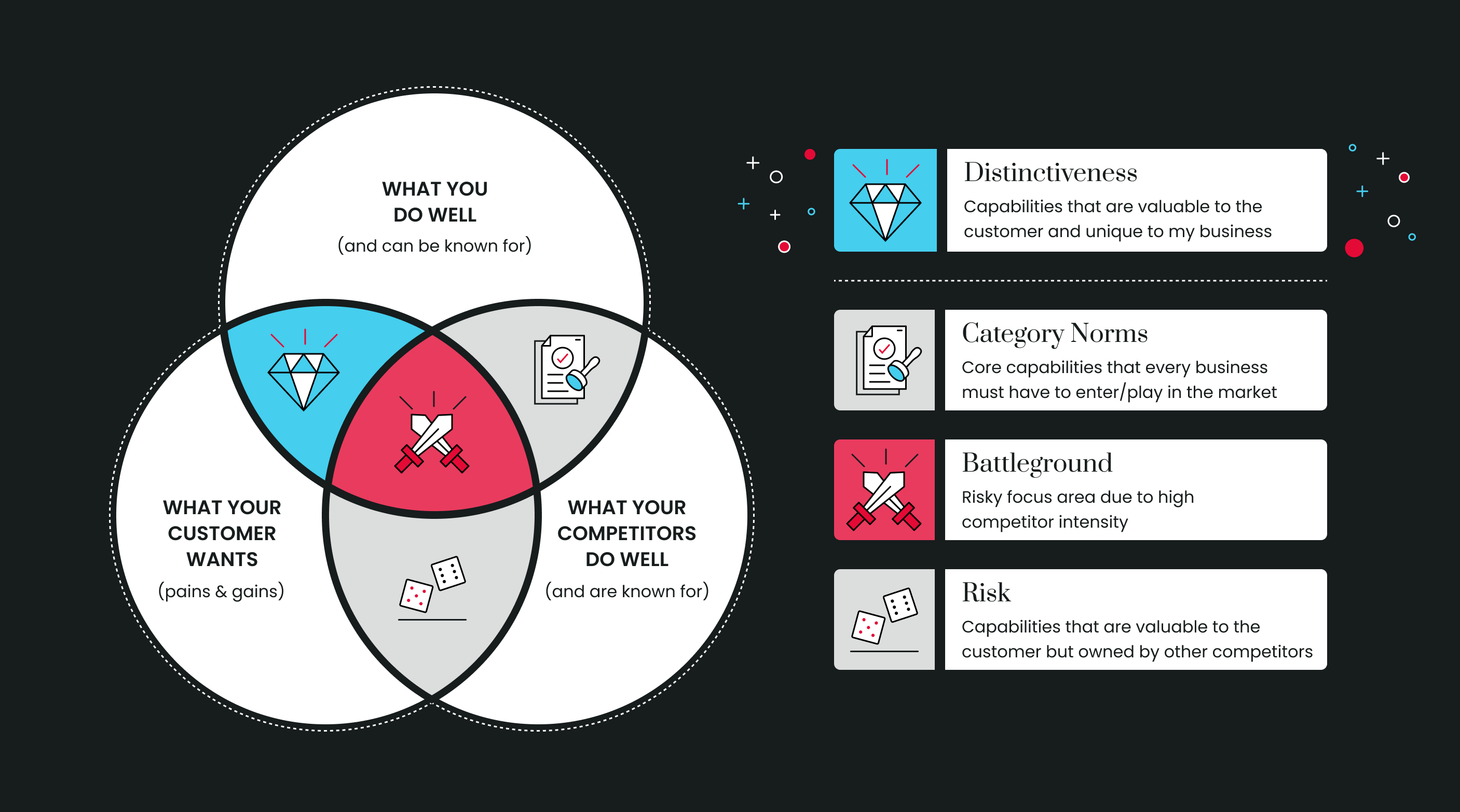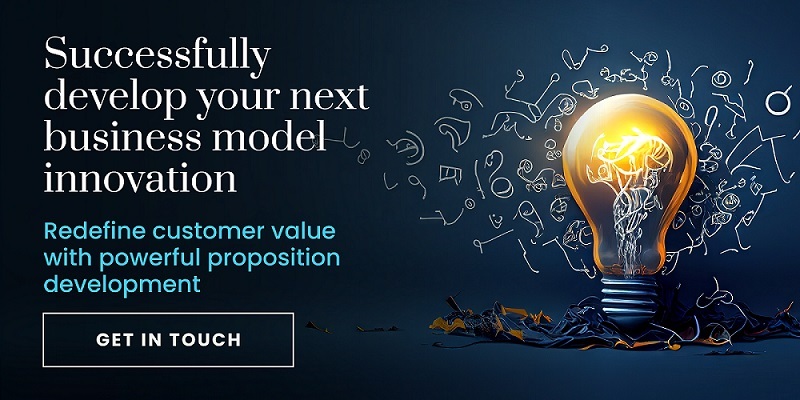Mastering Value Proposition Development: Stand out in a crowded market
Your value proposition must do more than describe, it must compel. A strong value proposition cuts through noise, clarifies your unique offer, and convinces customers why you're the right choice. Whether you're shaping a brand, product, or service, getting this right is essential. But crafting a compelling proposition isn't guesswork - it's a strategic discipline that blends insight, clarity, and creativity.

Why value propositions matter more than ever
Whatever your field, most business leaders will agree that market conditions are tough right now. Prices are high, budgets are low, and competition is fierce. A value proposition must work doubly hard to win customers’ attention (amidst a world of distractions) and their commitment (in a global market).
But what is a value proposition? It’s a statement that clearly defines the unique value of your offer – helping customers understand what it is and why they need it. Every product or service, every brand and every business should have a unique value proposition that speaks directly to the specific audience for that product/brand/business.
Effectively, the value proposition is a distillation of why the product/service/brand/business exists – the need it fills, and why it is the right entity for the job. If your value proposition isn’t up to task, there’s a good chance your strategy is also lacking. So, it’s critical to get it right. But it’s not just a question of brainstorming key words and phrases – there’s both art and science to value proposition development.
> EXPERT GUIDE: Overcome the pitfalls and challenges to successfully develop and ignite your next new growth engine.
What a value proposition is - and isn’t
Value proposition is one of those terms that can begin to feel like jargon when thrown around by consultants, so to avoid that let’s try to look at value proposition design in the wild – and understand why creating a meaningful value proposition is so important.
To give a well-known example, the value proposition for Cadbury’s Dairy Milk would be different to the value proposition for Cadbury’s Freddo – otherwise why make more than one chocolate bar? The value proposition helps identify not just which audience – e.g. children, adults, everyone – but also which moment these products are right for – e.g. a treat for yourself, a gift for someone else, etc. The value proposition must suggest that there is a reason to buy this specific product – or risk it being overlooked, undifferentiated, and ultimately forgettable.
Dairy Milk: Made with a glass and a half of fresh milk… It’s the classic creamy taste that’s unmistakably Cadbury.
Freddo: The delicious treat size frog made from classic, creamy Cadbury Dairy Milk chocolate. A little family favourite for generations
These value propositions differ from that of Cadbury the overarching brand, which must position itself as ‘good’ – i.e. with moral values that appeal to the public, such as generosity. You can see this play out in their strategy, with many products made for sharing or gifting and advertising based on the same theme.
Cadbury: A glass and a half for everyone
This value proposition is different again to that of the brand’s owner, Mondelez International, whose relationship is with shareholders rather than chocolate lovers. It must establish Mondelez International as a good investment, not a good snack.
Mondelez International: Empowering people to snack right — with the right snack, for the right moment, made the right way.
Value proposition often overlaps with concepts like brand purpose and promise. To help break this down, it is useful to look at another example of how a value proposition works at different levels within the same company. Cognosis worked with Arco, the UK’s leading supplier of safety equipment on different parts of their proposition.
The organisation’s overarching purpose is to keep people safe at work. By understanding the value that the organisation strives to deliver at a purpose level, it becomes strategically clearer about how that value translates at a brand promise level and with the creation of new products, services and business models.

If your value proposition is well thought out, well-articulated and based in reality, delivery should be no problem. Unfortunately, many businesses find value proposition design challenging and end up relying too heavily on templates rather than giving enough time to intelligence.
Finding the sweet spot – creating a value proposition that is distinctive and relevant
When we look at value proposition design, we focus on the sweet spot, where customer needs, the competitor landscape and business capabilities intersect.
- Customer needs – what your audience wants, needs, values, or struggles with
- Competitor activity – what others in the market are doing well (and where they’re not)
- Business capabilities – what you can credibly deliver and be known for
This insight-driven approach enables us to help you ensure your value proposition is both distinct and relevant, so you can make your customers a promise and keep it.

Understand your customer needs
Customer needs are often articulated in the form of jobs that need to be done. The classic example is that nobody wants to buy a drill; they want a hole. The best marketing takes this want to the next level by imagining all the positive changes that hole can bring about – family photos on the wall, your dream outdoor dining area, a treehouse, etc. These are gains. But many value propositions are based on pains – customer challenges your offer solves. For example, the printer always runs out of ink at the worst possible time. Enter: a new business model that sends ink directly to your door when your printer is running low. Mapping these pains and gains is arguably the most important step towards identifying your value proposition.
Analyse your competitors thoroughly
Any space worth moving into is usually occupied, so competitor intelligence is critical to mapping out how you plan to differentiate your product/brand/business. Again, this should be a regular process – not a one-off – as new competitors enter the market and existing competitors change strategy. It’s worth understanding not just who is out there, but what they do well, where they fall down and where are the gaps you can exploit.
Assess your own strengths and gaps
Last but of course not least is your own capabilities. What do you do well, and what could you be known for? Though this might seem like the easiest element to answer, sometimes it takes an outsider’s perspective to identify and successfully articulate where your value lies.
Digging deeper into this analysis, we explore:
- Distinctiveness – capabilities that are valuable to the customer and unique to your business
- Category norms – core capabilities that every business must have to enter/play in the market
- Risk – Capabilities that valuable to the customer but owned by other competitors
- Battleground – Risky focus areas due to high competitor intensity
Real-world example: How Saba found its edge
We used these techniques to help parking provider Saba differentiate itself in a crowded market. When Saba was looking to create a more compelling value proposition, we began by mapping out key decision makers within their target audiences to understand the procurement process, interviewing them to discover their decision-making triggers, needs and barriers. We leveraged these interviews to find out what these stakeholders thought of Saba and its competitors, generating invaluable insights that enabled us to chart the market landscape. We overlayed our analysis across Saba’s existing services, allowing us to identify opportunities for innovation and improvement. These insights helped us understand:
- Customer perspectives and pain points
- Competitor strengths and weaknesses
- Opportunities for differentiation
> READ THE FULL CASE STUDY: Standing out in a crowded market with a winning value proposition
Frameworks we use - and when we use them
Not every value proposition challenge is the same – that’s why we draw on different frameworks depending on the context. When developing new products or offers, we often use tools like the Desirability, Viability, Feasibility (DVF) framework – which helps answer:
- Do customers want it?
- Can we make money from it?
- Can we deliver it?
Similarly, Strategyzer’s Value Proposition Canvas offers a useful lens for mapping out customer jobs, pains and gains.
These tools are powerful, we use them frequently, particularly for innovation or early-stage development. For brand, business or established product-level value propositions, we often complement these tools with our ‘sweet spot’ approach – balancing customer needs, competitive gaps and internal capabilities.
Embedding the value proposition internally
While value proposition development must be grounded in customer insight, internal perspectives are just as important. Engaging stakeholders from across the business – sales, marketing, operations, HR – ensures you capture the full picture of what makes your offer credible and deliverable. These teams often hold invaluable insight into what truly resonates with customers and to your in-house capabilities.
Just as importantly, early stakeholder involvement fosters alignment and ownership. If your employees don’t understand or believe in your value proposition, neither will your customers. A successful value proposition isn’t just well-articulated, it’s ‘lived’ across the business.
Embedding it into culture means integrating it into onboarding, training, performance metrics, leadership messaging, and everyday language. When teams are aligned behind a shared understanding of the value you deliver and why it matters, they become its most powerful advocates, ensuring consistency, credibility, and long-term impact.
Why partner with Cognosis for your value proposition development?
Value propositions are vital but complex. Getting them right requires deep insights and intelligence, careful articulation and strong stakeholder engagement. That’s why we focus on finding the sweet spot by combining customer, competitor and company capability analysis to help you encapsulate the 'why' and 'why me' of your offer.
At Cognosis, we’ve helped organisations across industries cut through the noise with value propositions that are not only differentiated but actionable – anchored in reality, aligned with business capability, and resonant with customer needs.
Explore our approach to see how we can help you develop value propositions that differentiate, resonate and deliver.


